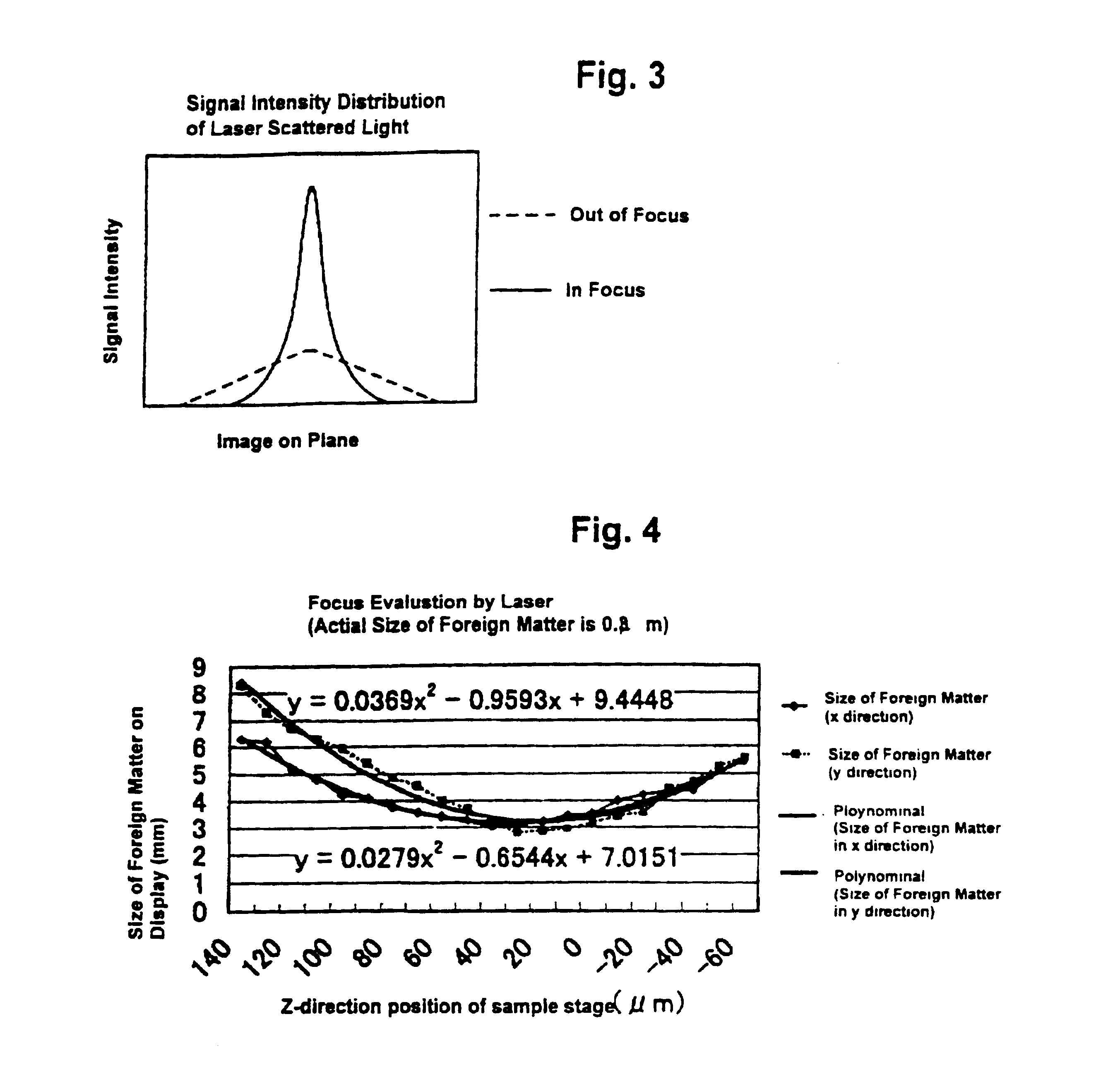Automatic focusing system for scanning electron microscope equipped with laser defect detection function
a scanning electron microscope and automatic focusing technology, which is applied in the direction of semiconductor/solid-state device testing/measurement, instruments, and super-high-integrated lsis manufacturing, can solve the problems of micro foreign matter with diameters of 0.1 .lambda.m, defects in semiconductor chips and their lowering quality and reliability, and defective products in manufacturing super-highly integrated lsis
- Summary
- Abstract
- Description
- Claims
- Application Information
AI Technical Summary
Benefits of technology
Problems solved by technology
Method used
Image
Examples
Embodiment Construction
Minute foreign matters that are present on a surface of a planate sample such as a silicon wafer can be detected by using a scanning electron microscope equipped with a laser defect detection function and analyzed. However, when minute foreign matters whose positions have been specified by a dark-field image obtained by the laser irradiation are subject to an observation by the scanning electron microscope, such observation may not be immediately conducted as it may take time to readjust the image. As described above, in the case of a scanning electron microscope, an image formed by the scanning electron microscope is blurred when the image is not in focus because its focal depth is shallow. Observation of extremely small particles is thus impossible if the image is not in focus.
In accordance with an embodiment of the present invention, a scanning electron microscope is provided with an automatic focusing function so that observation by the scanning electron microscope can be quickl...
PUM
| Property | Measurement | Unit |
|---|---|---|
| size | aaaaa | aaaaa |
| size | aaaaa | aaaaa |
| size | aaaaa | aaaaa |
Abstract
Description
Claims
Application Information
 Login to View More
Login to View More - R&D
- Intellectual Property
- Life Sciences
- Materials
- Tech Scout
- Unparalleled Data Quality
- Higher Quality Content
- 60% Fewer Hallucinations
Browse by: Latest US Patents, China's latest patents, Technical Efficacy Thesaurus, Application Domain, Technology Topic, Popular Technical Reports.
© 2025 PatSnap. All rights reserved.Legal|Privacy policy|Modern Slavery Act Transparency Statement|Sitemap|About US| Contact US: help@patsnap.com



